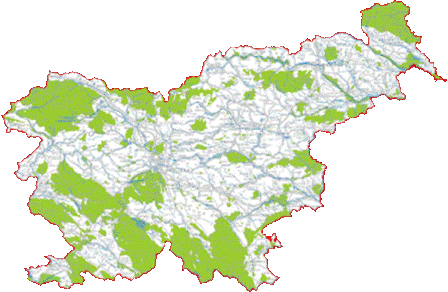NATURA 2000
Natura 2000 is an ecological network in the
territory of the European Union. In May 1992, governments of the
European Union adopted legislation designed to protect the most
seriously threatened habitats and species across Europe. Natura 2000
sites form Special Protection Areas identified under the provisions of
the
Birds Directive (79/409/EEC) and Special Areas of Conservation
designated under the
Habitats Directive (92/43/EEC).
The Birds Directive requires the establishment of
Special Protection Areas (SPAs) for birds. The Habitats Directive
similarly requires Special Areas of Conservation (SACs) to be designated
for other species, and for habitats. Together, SPAs and SACs make up the
Natura 2000 sites.
Both directives together constitute the international
legal basis and professional framework of European nature conservation.
The Directives enforce the principle of sustainable development and
other international conventions in the field of biodiversity
conservation. The most important among them is the Convention on
Biological Diversity, adopted at the 1992 United Nations environmental
conference in Rio de Janeiro.
The Natura 2000 network contributes to the "Emerald
network" of Areas of Special Conservation Interest (ASCIs) set up under
the Bern Convention on the conservation of European wildlife and natural
habitats. Each EU Member State must compile a list of the best wildlife
areas containing the habitats and species listed in the Habitats
Directive and the Birds Directive. This list must then be submitted to
the European Commission, after which an evaluation and selection process
on European level will take place in order to become a Natura 2000 site.
Natura 2000 protects 18% of land in the 15 countries
that formed the EU before the expansion in 2004.
The project of the European Union 'Natura 2000' is
aimed at preserving sites of internationally important habitats, fauna
and flora. According to the uniform criteria, the selected sites in each
country form a network, providing the basis of cross-border protection
and conservation of natural heritage.

Natura 2000 sites or Special Protection Areas are
ecologically important areas in the European Union, important to
maintain or achieve a favourable status of birds (Special Protection
Areas) and other animal and plant species, their habitats and habitat
types (Special Areas of Conservation), whose conservation is of
interest to the community.
Natura 2000 is not a system of nature reserves, which
would restrict all human activities in these areas. It is a system of
protected areas, where the activities should enable the conservation of
biodiversity.
LIFE is an instrument in support of the European
Commission = environmental support
LIFE is a financial program for the environment and
nature protection and is divided as follows:
LIFE-Nature: funds to improve the conservation of
habitats and species in the Natura 2000 network, preserving Europe's
natural heritage in the sense of the Convention signed in Rio.
LIFE-Environment is to improve and ensure the abiotic
environment, i.e. for environmental technologies (clean air, new
technologies ...)
LIFE-Nature projects are usually supported by up to 50%
of the total, with the exception of projects whose priority targets are
habitats. These projects are supported by up to 75%. In 2005, only 54 of
the 170 LIFE-Nature projects in 20 EU Member States were selected. They
were supported by a total of EUR 60 million.
LIFE-Nature is the only financial instrument of the EU
programs for the protection of nature and to support the programs in the
Natura 2000 network. Natura 2000 is a merger of areas and regions for
the protection of biodiversity. The sites are designated in accordance
with the guidelines for the preservation of flora and fauna and the
guidelines for the protection of birds; they apply to all EU Member
States. Natura 2000 and its networks are part of the European policy of
nature conservation and are financially supported by the LIFE program.
The condition for the project to be financed by LIFE is that the project
is located in the areas declared Natura 2000.
More on Natura 2000 sites at:
Institutions:
EC LIFE Programme
Ministry of Agriculture and the Environment of RS
Natura 2000:
Natura 2000 network
Biodiversity:
Europa Environment - Nature and Biodiversity
Slovenia and Natura 2000:
Ministry of Agriculture and the Environment of RS, Natura 2000 in
Slovenia
Publication on Natura 2000 (in Slovene only)


